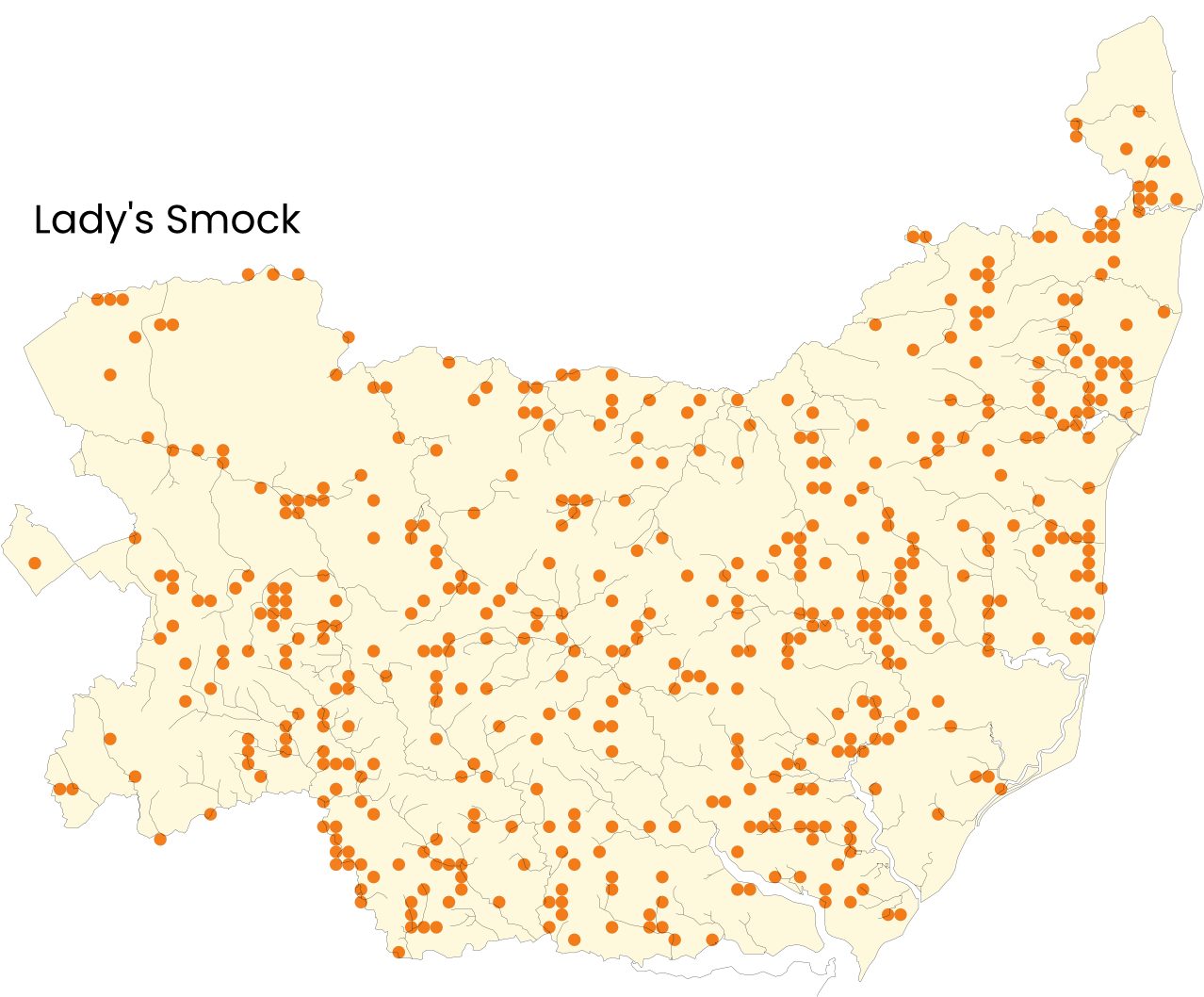Lady's Smock – also known as Cuckooflower, Mayflower, or Milkmaids – is a perennial flowering herb of the Brassicaceae family.
They have a beautiful crown of pale pink to mauve cruciform flowers (four petals in a cross shape) that grow in a ring at the top of the flower stem. The narrow-stalked flowers, in upright spikes, are 1 to 2cm across. They have six stamens, four long and two short, with yellow anthers surrounding a single style.
© Will George (Flickr)
Every now and then, you might find white or double-flowered varieties. At night or during heavy rain, the flowers will droop and close. The flowers are pollinated by bees, flies, moths and butterflies.
© Kjbax (Flickr)
Small thin pods with tiny seeds appear after the flowers have dropped. However, the plants are often sterile, setting no seed, and rely on cloning to reproduce by rooting new plants from their basal leaves.
© Lex McKee (Flickr)
They have short-stalked pinnate leaves with ellipsoidal leaflets; they alternate up an unbranching stem above a rosette of long-stalked round basal leaves.
© Daniel Cahen (iNaturalist)
In folklore, it was unlucky to bring them indoors as they were considered sacred to fairies. And for the same reason, they were not used in May Day garlands.

They can be found across Suffolk, except for the driest parts of the Brecklands and Sandlings. Although they are not protected or threatened, their range has been reduced due to the drainage of many of our wetlands.
For a more detailed exploration of its distribution in Suffolk and the UK as a whole, have a look at the Plant Atlas 2020
Distribution in Suffolk
They are found in damp pastures, woodland glades, riverbanks, and fens. They can also be found in domestic settings such as churchyards, gardens and lawns.
Video by Markéta (Machová) Klimešová from Pixabay
© Allan Hopkins (Flickr)
Orange-tip Butterflies Anthocharis cardamines find the flowers particularly attractive, and Lady's Smock is one of their primary larval food plants. The young larvae eat the flowers first, then the leaves, stem, and seedheads.
The Meadow Froghopper Philaenus spumarius is attracted to the sap of these plants, and its larvae make frothy blobs on the stems, sometimes called cuckoo spit.
Did you know?
Its common name, Cuckooflower, refers to the arrival of the flowers at the same time as the cuckoo begins to call.
Edibility
© Julie Falk (Flickr)
Both the flowers and leaves of Lady's Smock are edible. They were once a popular spring salad plant and used as an alternative to watercress due to their peppery zing.
The leaves of young shoots taste like hot mustard or wasabi and can be eaten raw or cooked. They are rich in vitamins (particularly vitamin C) and minerals. The flowers taste faintly of cress and are a great addition to a salad with their sweet, hot flavour.
© Paul Van De Velde (Flickr)
Did you know?
Their leaves have been used to treat chronic skin complaints and asthma. Amongst other uses, they are said to have beneficial digestive and stimulant properties.
Spotting them
When to see them
April to June.
Remember to record your sighting if you spot them in Suffolk!
© Philip Goddard (Flickr)
